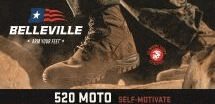FORT BENNING, GA, –
Accuracy by volume has been a long-standing sarcastic remark towards the shooting style of machine gunners. However, that is about to change with the new Family of Weapons Sight – Crew Served (FWS-CS) machine gun optic that provides Soldiers increased accuracy and lethality by leveraging the most up to date weapon sight and wireless technology.

Project Manager Soldier Maneuver and Precision Targeting (PM SMPT) held a Soldier Touchpoint (STP) with Soldiers of the 82nd Airborne Division in Fort Benning the last week of February. The Soldier feedback from the STP ensures end users are involved throughout the development of the FWS-CS and it has marked advancements in capability compared to legacy equipment.
“With a program as complex as ours, we need feedback early and often in order to ensure we get our machine gunners what they need in the final product,” said Maj. John Nikiforakis, PM SMPT Assistant Product Manager. “Mounted machine gunners have the difficult task of providing guidance to the crew, ensuring protection of their vehicle, and most importantly providing lethal effects on the enemy. The FWS-CS ensures that the gunners in turrets have the best optic for all battlefield conditions and one that mounts to any crew served weapon in the Army’s inventory.”

“We’re comparing shooting data from the current M145 Machine Gun Optic (MGO) to the FWS-CS to see if we can engage targets at unknown distances faster and more accurately,” said 1st Lt. Anthony Ramirez, 2-325, 82nd Airborne Division. “The biggest benefit of the FWS-CS is that there’s a built-in laser rangefinder and ballistic calculator, so it determines the range and adjusts the reticle. All we have to do is put the reticle on the target and engage.”
The FWS-CS is the first machine gun optic to utilize the ‘disturbed reticle’ technology. Along with calculating the range to the target, the ballistic calculator can adjust for air density and works with any of the Army’s current machine gun systems.
“Typically you have to walk your fire on target, but with the FWS-CS you have impact on the first burst,” said Sgt. Jose Perez, 2-325, 82nd Airborne Division. “It’s a really cool system that can be used with multiple firearms, including the M240, MK19, and .50 Cal.”
In addition to the disturbed reticle, the FWS-CS can be used day or night and in limited visibility conditions which provide Soldiers greater lethality on the battlefield.

“It is a day and thermal sight. So it allows us to operate in a multitude of environments and be able to engage under more conditions than the M145 is capable of,” said Ramirez. “It has the capability to look through fog and other inclement weather conditions that the old M145 wouldn’t be able to reach out and see.”
“It’s extremely awesome, like Call of Duty kind of equipment that usually just goes to elite units.”
PFC Brown,
2-325, 82nd Airborne Division
The FWS-CS utilizes long-wave thermal technology and a high-definition digital day display that provides users with an extremely detailed field of view and many options for customizing the reticle and display.
“The thermal and daytime displays are both extremely clear,” said Pfc. Benjamin Brown, 2-325, 82nd Airborne Division. “It’s customizable to the shooter’s preference, changes from white hot to black hot, there’s different reticle colors, and up to a 4x zoom which makes identifying and engaging targets faster and more accurate. I would love to have this in the field.”

“It allows you to discriminate targets based on what the individuals look like,” said Ramirez. “You can determine the target’s weapon system or if they’re wearing body armor.“
In addition to its stand-alone performance, the FWS-CS is one of many programs within PM SMPT to utilize wireless technology. The Intra-Soldier Wireless (ISW) system allows the FWS-CS to connect to a Helmet Mounted Display (HMD).
“You have an eyepiece attached to your helmet, so you don’t even have to be down behind the gun with your eye in the scope,” said Pfc. Jake Ongar, 2-325, 82nd Airborne Division. “You can look through the HMD to see what you’re shooting at while staying behind cover, I think it’s a pretty cool feature.”
The effort to integrate capabilities and drive weight reductions are part of Program Executive Office (PEO) Soldier’s vision of treating the Soldier as an integrated combat platform.
When asked when the FWS-CS is planned to be fielded Nikiforakis said, “The first Soldiers will see the FWS-CS in FY23. We still have a few modifications to make and several more tests to meet the demands of gunners.”
“I think this weapons sight has the potential to drastically improve Soldier lethality,” said Ramierz. “Being able to engage the enemy faster and more accurately is going to allow us to overtake the enemy and accomplish our mission.”
By Justin Sweet PEO Soldier

































































































































